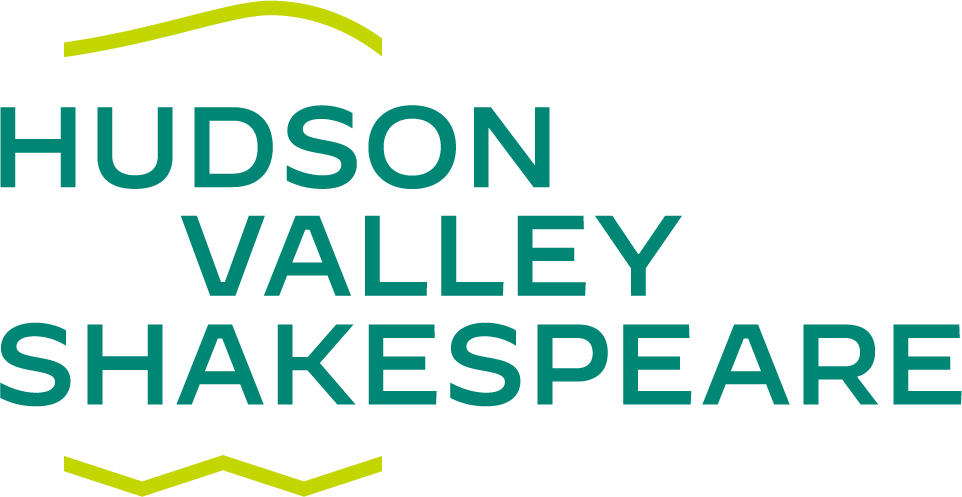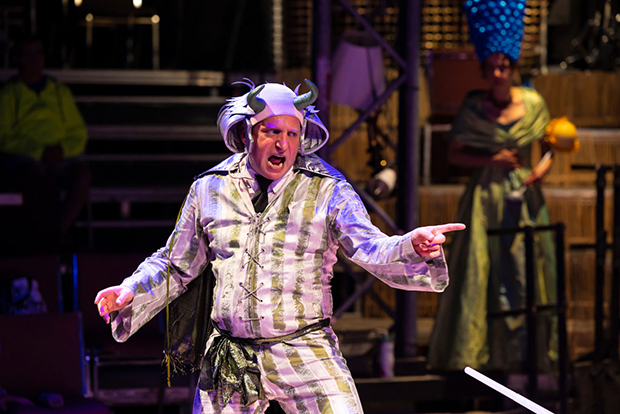Posted August 19, 2022
 Originally published on August 16, 2022 in Vox by Constance Grady.
Originally published on August 16, 2022 in Vox by Constance Grady.
Anne Washburn, the playwright behind Mr. Burns, explains herself: “It’s about the comfort of looking again.”
Anne Washburn’s play Mr. Burns begins with a striking image. A group of four people sits around a campfire. They are tense, watchful, carrying guns. A woman apparently mute with trauma crouches on the outskirts of the firelight. The group is trying to remember the details of an episode of The Simpsons.
Mr. Burns takes place in a post-apocalyptic world, one now oddly more familiar than it was when the show was first staged in Washington, DC’s Woolly Mammoth Theatre in 2012. Humanity has been decimated by a pandemic. In the aftermath, the electrical grid has failed, which in turn has led to the meltdown of the world’s nuclear reactors. Now, just months after civilization has been utterly destroyed, a few scattered survivors are trying to pass the night by reconstructing the 1993 Simpsons episode “Cape Feare,” which sees ex-convict Sideshow Bob setting out on a murderous campaign to kill Bart Simpson.
In the second of Mr. Burns’s three acts, we see the post-apocalyptic world advanced seven years into the future. Now, the survivors we met in Act 1 have formed an acting troupe. They travel what’s left of the US performing old episodes of The Simpsons, complete with interludes for commercials and a medley of the biggest pop hits of the 2000s. In the final act, which takes place 75 years later, things have changed yet again. Now, “Cape Feare” has become a kind of epic poem that a new society uses to mourn the loss of the old. It’s Homer meets Homer (the other one).
Mr. Burns is now onstage again at the Hudson Valley Shakespeare in Garrison, New York. It’s the first major revival of the work since it became a cult sensation at New York’s Playwrights Horizon in 2013, which means it’s also the first major revival since the pandemic hit in 2020. And now that we’ve all lived through lockdown and what felt like at least one minor apocalypse, we know that Washburn was correct about what you do at the end of the world: you sit down and you try to lose yourself in some good old-fashioned comfort television.
To find out more about what Mr. Burns has to tell us about stories, how they change, and why we need them, I called Washburn up over Zoom. Highlights from our conversation, lightly edited for length and flow, are below.
I want to start with the creation of this idea. I’ve read that you said you were interested in seeing what would happen if you pushed a TV show past the apocalypse. Did you always have in mind the same ending point, with the TV show becoming a piece of classical tragedy?
Yes. What I knew about it when I started was that the first act would be right after the fall of civilization. The second act would be five or seven years later, and then the end would be 75 years later. There would be a few old people around who could still remember what it had been like before, but mostly it would be a new generation.
Talk to me about the development process for this show. How did you build out the three acts?
I wanted to start with getting a few actors in a room to remember a Simpsons episode, because that language of trying to remember something is so specific and wonderful and delightful. But I didn’t want to inconvenience my friends, the actors, for more than a day without paying them, and I didn’t know how long it would take. So I kind of sat on this idea for a couple of years.
And then I was talking with Steve Cosson, who is AD [artistic director] of The Civilians, this investigative theater group that I’m part of. He asked if I wanted to apply for a commission. So we [proposed Mr. Burns] for that, and the commission came with some development money.
So then we plunked this group of actors together in this weirdo rehearsal space in a bank vault underneath Wall Street, which was a free space that summer that was getting passed around.
Very post-apocalypse.
It was very post-apocalypse. Our cellphones didn’t work in there. We were in a literal bank vault, with a huge door to it. The lights flickered. It was incredible, kind of great and horrifying.
I knew I wanted to start with that language [of remembering], so we sort of had them remember Simpsons episodes, and we had them do it many different times. I had a transcript of it, and then I sat on it for two years until Steve began to bug me, because I didn’t think it was a show anyone would do.
I transcribed their multiple versions and put it into one version, and that was how it started. And then I just basically wrote it.
The episode you landed on, “Cape Feare,” is really a perfect episode of The Simpsons for this project because it’s so referential. It’s built around the Robert De Niro movie Cape Fear from 1991, which itself is a remake of the 1962 movie Cape Fear and also heavily drawing from the 1955 movie Night of the Hunter. And both of the Cape Fear movies are based on a novel. Did you ever have a moment of being like, “Yes, this referentiality is going to be one of the big themes of this show, and it’s all coming together”?
I didn’t have that train of thought. But it seemed perfect.
Even before we got the actors together in the room, the show was still called Mr. Burns. So I didn’t know how it was going to end or what was going to happen at the ending, but I knew that Mr. Burns was a central figure of it somewhere, the central villain.
We were really taking a chance on them remembering episodes that would have been good. I love to think what would have happened if we’d had a different episode. How differently would the play have gone?
It might not have gone differently. I think the moment you come up with an idea for a play, in some weird way you’ve already structured it in your head. But then so much of the play depended on that.
All of which is to say it felt quite perfect in many ways. It’s deeply referential, but it’s also just such a deeply primitive story: It’s a family on a river, with a killer. So it’s horrifying in that way, and also in a post-apocalyptic time of poor societal control, it would really feel right.
I had a conversation after I had written it with Jon Vitti, who was the lead writer on that episode. He came to see it in DC, which we hadn’t considered as a thing that might happen. I thought, “Oh, The Simpsons is created by this phalanx of Harvard men.” Suddenly I realized, “Oh, there’s a writer who wrote this.” I was sort of terrified that he wouldn’t like it and would feel violated, but he loved it.
One of the things he said to me that I thought was really interesting was that it was the practice of [The Simpsons] that you couldn’t reference any one source very particularly. It was mixed and mashed up so that any audience member coming in who might not have seen one particular thing wouldn’t be left at sea. But this episode was written at the very end of season five, when that initial writer’s room was just about to go. They kind of figured, “Fuck it.” They wanted to do an episode that centered more around one movie.
A lot of people really remember that episode very well, and I think it’s because it’s a more intact story, and a more intact set of references. It references a million other things as well, like any of them do. But it’s easier to put together in your head, because it retains this kind of ancient lineage of the remake of Cape Fear and the original Cape Fear and Night of the Hunter. It has this core running through it.
I want to zoom out a little now. In the first act, we see the survivors of this apocalypse sitting around the campfire, trying to retell this Simpsons episode from memory. It feels very true to what life was like at the beginning of lockdown, when so many of us were spending time watching nostalgic old TV shows. Why do you think this kind of pop culture comfort food can feel so important in times of deep disaster?
It seemed to me that if you had a group of people who didn’t know each other around a campfire, they would want to tell the stories they have in common. Because when you’re anxious, you look for stories you already know. And the stories that we all have in common at this point are TV shows.
I mean, they used to be. It’s not the same anymore. I would write it differently if I were writing it now, honestly, because we’re much more divergent. But at that time, everybody had seen The Simpsons.
Also, it’s funny. It’s a place you would want to go if everything around you was dark and unholy. In the same way that I was about to watch what I am told is an uncommonly fine television series, Chernobyl, and then the pandemic hit. And I was like, “That’s on hold. I will not watch this program, however wonderful, anytime soon.”
I think of this play — and I didn’t think of it in this way when I wrote it — but I think of it as being in many ways a 9/11 play. It was written about 10 years afterward, and it takes about that long to digest something. I’m sure there’s going to be all sorts of stuff about the pandemic coming out soon, but it’s going to be longer before it really starts.
But something I thought was really interesting about 9/11 was the way that, because it was a shared group crisis in New York, there was this etiquette. People instantly cottoned onto ways of behaving or ways of giving information, and everybody did it very quickly. I’d never seen the formation of etiquette or group process happen that quickly.
I felt a similar way in the pandemic. Nobody was masking, nobody was masking, nobody was masking, there was a mandate, and then suddenly everybody was masking. Everybody suddenly began panicking and running for the beans. There was this whole elaborate thing of wearing a mask in the park when no one was there, or taking it off the moment you saw someone in the distance. We all obeyed the same rules at the same time. So in that way it felt recollective to me of groupthink, or the ways we all operate as animals when we’re in crisis and decide to do the same thing.
In the second act, we see this acting troupe recreating not just the Simpsons episode, but also a long commercial segment. We learn that they pride themselves on the strength of their commercials as being what sets them apart from other troupes. The commercial isn’t really selling anything in particular, but it’s sort of an invocation of brand names and various capitalist creature comforts. What led you to including that segment in the second act?
Commercials are kind of incredible. They’re an incredibly useful way to create suspense within a narrative. This is something we don’t experience in the same way anymore, but it used to be you’d be experiencing your drama or your comedy, and then you’d be bopped out of it. And it’s irritating, but then you’d see one commercial, and then another commercial, and then another commercial. They’re actually an incredibly weird, creative thing to have in the middle of other stories. Like vaudeville in the middle of the drama.
It’s about the comfort of looking again. It’s about the deeply bittersweet comfort of looking at where we were when we had all this food, and the problem was someone in your office taking food from the fridge. But it’s also the place where they [the actors within the play] could stretch a little bit, in ways they might not even understand as being creative.
It’s not the way that we handle commercials now. We talk about commercials satirically, so I think even the fact of watching people handling commercials not satirically signals to the audience, in a very quiet way, that this is a very different society. Even if you can’t quite put your finger on it.
We also learn in the second act that there are a bunch of other acting troupes out there, and they’re all vying for control of various Simpsons episodes to perform. How did you decide that copyright would outlast the apocalypse?
Any creative group has monitored, if they could, their version of things. As long as art is worth something, people want to know that their version is protected, and in the absence of a copyright office you turn to different methods. If something’s worth something you’re going to be protective of it, and art is always worth something.
You mentioned earlier that you knew from the beginning that Mr. Burns was going to be a central character, and then you ended up building the play around “Cape Feare,” which is a Sideshow Bob episode where Mr. Burns doesn’t appear. I really love the way that in the final act, we see that Sideshow Bob has become conflated with Mr. Burns as the great mythic villain who the Simpsons must fight. How did you come to the decision that this transformation would have to happen?
Villains swap out easily, as we see in Batman and Spider-Man. The hero’s always the same and the villain’s always different. That doesn’t take much.
Without getting too far into it, I felt like the villain in the third act would be a figure which would reflect the fears of that world, would articulate the dangers which aren’t going away. In Night of the Hunter, he’s a force who’s noncivilized. Robert Mitchum who becomes Robert de Niro who becomes Sideshow Bob: he’s uncontainable. He can’t be controlled by society. If you expand that to all the forces who can’t be controlled in Act 3, that’s what that figure can circle around. It’s social stuff, it’s violence, it’s everything that can’t be regulated by law. It’s environmental damage. All of the darknesses which are invisible.
Okay, time for us to wrap up. It’s the end of the world and you’re sitting around the campfire, telling stories. What stories are you telling?
I think it would happen much the way it happened in the bank vault: you’d have a group of people canvassing each other and riffing off of this and riffing off of that, and then something would catch fire in the group. And people would figure out what kind of story they wanted to hear together.
So the story comes from the group and from our shared communities?
I think it comes from our need, right? And we don’t necessarily know what we need until we touch on something that starts to fulfill that.

